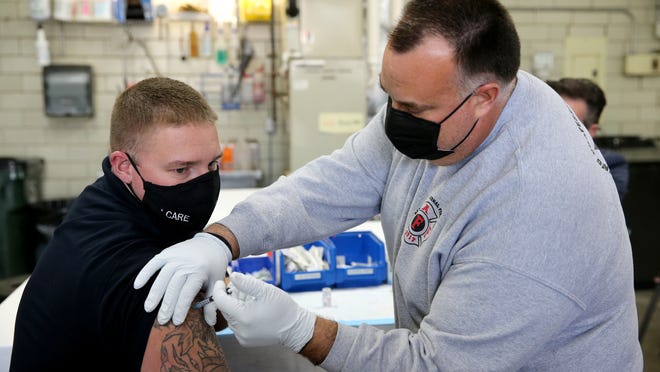

In the state's latest heat map showing the spread of new coronavirus in Ohio, little has changed in the past two weeks. A total of 84 counties – including the four in Southwest Ohio – stayed red for "very high exposure and spread." The remaining four were orange.
There have been no yellow (Level 1) counties for weeks. There are not currently any purple (Level 4) counties.
The map released on Thursday, based on seven indicators, shows conditions once again have improved in Butler, Hamilton and Warren counties over the last week. Conditions are also better in Clermont County, which hit its highest per capita rate of cases last week.
All four counties saw drops in the rates of new cases per 100,000 residents. But the rate remains four times above the level of community spread level in Hamilton County, five times above the community spread rate in Butler County and seven times above the community spread level in Clermont and Warren counties.
More:
State officials last month added a per capita map to its COVID-19 dashboard, bringing new attention to that measure. Every county in Ohio exceeds the CDC’s threshold for high incidence, which is 100 cases per 100,000 residents. State officials say said the information can help people understand the severity of COVID-19 transmission by county.
At the beginning of November, the statewide average of cases per capita during the previous two weeks was 258. This week, the statewide average is 658 cases per 100,000 residents during the past two weeks. Last week, it was 769.
There are 71 counties that are at 500 or more, meaning at least 1 out of every 200 residents has tested positive for COVID during the past two weeks and is at risk of spreading it to others.
A county stays red (Level 3) on the color map until it drops below the high incidence threshold of more than 100 cases per 100,000 over a two-week period. The county with the lowest rate, Holmes, is at 298, far above that threshold, so it's unlikely any counties will fall below that anytime soon.
There are no state mandates or restrictions tied to the alert levels, but the designation could inform changes at the local level. Some school districts have tied in-person classes to certain color designations.
Residents in "red" counties are advised to "limit activities as much as possible" and "limit attending gatherings of any number." Residents in purple counties are advised to leave home only "for supplies and services."
The county ratings are based on seven indicators:
- New cases per capita.
- Sustained increase in new cases.
- Proportion of cases not in a congregate setting.
- Sustained increase in emergency department visits for COVID-like illness.
- Sustained increase in outpatient visits for COVID-like illness.
- Sustained increase in new COVID hospital admissions.
- Regional intensive care unit bed occupancy.
Counties that meet two or three indicators are coded orange and considered to be a Level 2 public advisory. Counties meeting four or five indicators are red, Level 3 public advisory. Counties meeting more than five indicators for two weeks in a row are purple.
All 88 Ohio counties reported three times the number of cases the CDC considers "high incidence" over the past two weeks – 100 cases per 100,000 residents.
For more details on each county's indicators on the Ohio Public Health Advisory System, visit coronavirus.ohio.gov.
Source link








